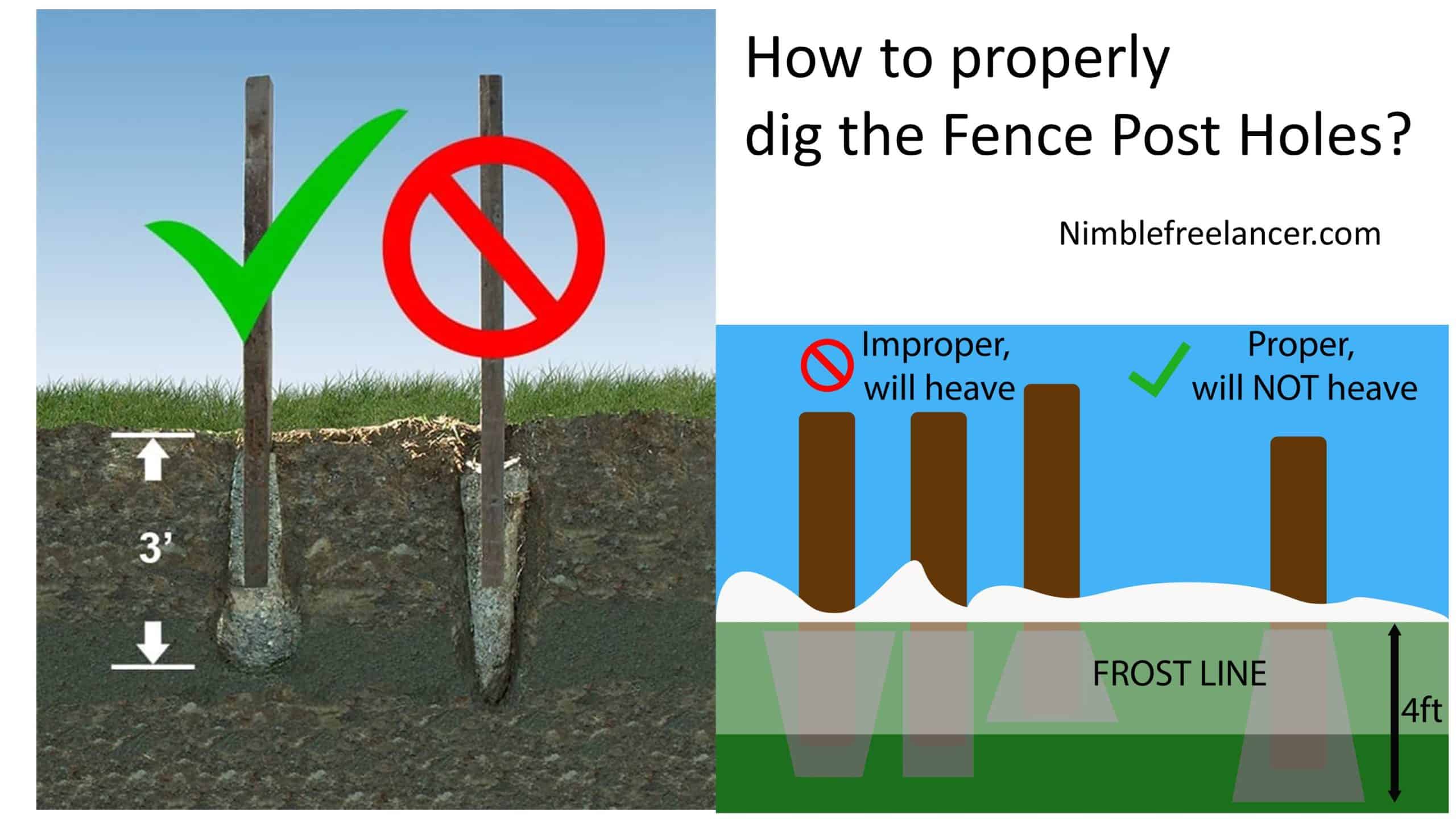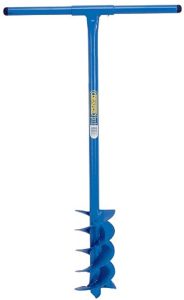One of the most critical steps is digging fence post holes when embarking on a project involving building a wall. It is essential to dig the holes deep enough so the posts remain securely in place and are not subject to movement due to wind or other environmental conditions. Properly drilled fence post holes should be between two and three feet deep, with the post height at least five feet. Additionally, approximately one-third of the post should be buried in the ground. For example, if you have a fence with nine-foot-tall posts, you must bury at least three feet of each post in the ground.
How Deep to Dig Fence Post Holes?
Post-hole depth should be from 2 to 3 feet. Post height should be 5 feet and at least 1/3 the height of the post in the ground. For example, a 9-foot tall fence will need at least 3 feet of the post in the ground.
In the previous article, we learned about frost line zip by code and that each US state has a minimum digging level correlated with frost temperature. It would be best to dig deep enough so that the bottom of the hole is below the frost line.
Look below for how to dig the Fence Post Holes properly:

When determining how deep they need to be, it is essential to consider the type of soil you will be digging your holes in. If you use clay-based grounds, digging slightly deeper than two or three feet may be beneficial, as it is generally easier for water and moisture to seep through these soils than sandy soils. This can cause posts installed in shallow clay holes unstable as water erodes at their base. Similarly, ensuring adequate drainage around all sides of your posts can help them last longer and remain upright for extended periods.

When choosing the right size of fence posts, many factors must be considered. The primary factor that should be considered is the size of the post above ground, as this will determine how wide and deep you need the post to be. To ensure that the post is stable in your chosen location, it is essential to calculate the correct measurements for a given post size.
The height of a fence post should usually be around 90 cm or 3 feet from ground level, but this measurement may vary depending on the type and style of fencing you choose. Additionally, when selecting a post size, you should consider the width and depth of the hole that needs to be dug for installation. A good rule of thumb is that a hole should be at least two-thirds as deep as it is comprehensive for your fence post to remain upright and secure.
If you are looking for a standard-sized fence post, 50 mm or 2 inches is typically the most popular option used by homeowners and landscapers. For such a small post size, installing it requires only 1/3 of a 20kg bag of concrete, making it relatively easy and inexpensive.
However, if you are looking for something with more excellent durability, you may opt instead for 75mm or 3 inches diameter posts requiring one full bag of concrete. At the same time, 100 mm or 4-inch diameter posts call for two ¾ bags, making them more expensive than smaller posts due to the more significant amounts of material needed.
No matter what type or style of fencing needs installing, knowing how much space will be required between each fence post is necessary so that your structure remains strong and durable over time. Furthermore, measuring these distances correctly will also help prevent any gaps from forming between panels, which could lead to potential security breaches in your garden or outside area.
In conclusion, when selecting an appropriately sized fence post, numerous variables must be considered before installation begins, such as height from ground level and width/depth measurements required for optimum stability over time. Additionally, other factors like the amount of material needed per bag can also affect the cost, so careful consideration should always go into choosing an appropriate size suited for individual requirements before any work begins on site.




